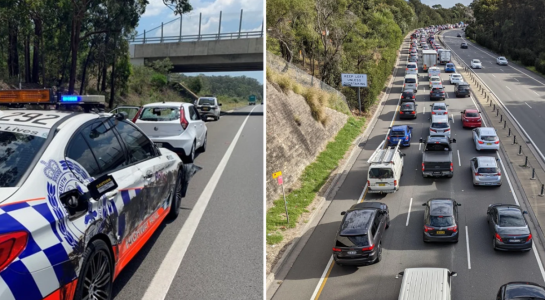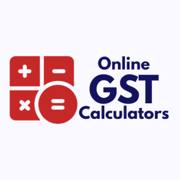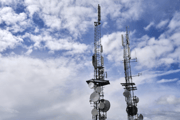Recent surge in drug driving offences sends clear message to Aussie drivers
By
Gian T
- Replies 5
The roads are not just thoroughfares for travel; they've become battlegrounds in the fight against drug-impaired driving.
A recent surge in drug driving offences has sent a clear message to Australian drivers: the authorities are watching, and they're better at catching offenders than ever before.
The statistics in New South Wales, the most populous state in Australia, are particularly alarming.
The NSW Bureau of Crime Statistics and Research (BOCSAR) has reported a staggering increase in drug driving infringements, with 13,815 people caught in the act last year.
This figure is nearly ten times higher than the 1,409 offenders detected a decade ago, in 2014.
This 'explosion' in drug driving cases is not a sign of increased drug use among the NSW population but rather a testament to the intensified enforcement efforts by police.
Roadside drug tests have skyrocketed from 20,000 in 2008 to a whopping 156,000 a decade later.
As a result, drug driving offences now account for a significant chunk of local court dockets.
Jackie Fitzgerald, Executive Director at BOCSAR, highlighted the dramatic rise in favourable detection rates, which have climbed from 2-3 per cent to almost 10 per cent in recent years.
She points out that the threat of being caught is a powerful deterrent against criminal behaviour.
However, with over 6 million drivers in NSW and only 160,000 drug tests conducted last year, most drivers are unlikely to be tested annually.
The state's average for drug driving detections in the past year was around 200 positive tests per 100,000 people, with regional areas showing the highest rates.
From 2008 to 2023, drug driving charges per quarter have surged from an average of 102 to 3,296.
Cannabis remains the most commonly detected drug, sparking debate over the fairness of penalties, especially for medicinal marijuana users.
Under current NSW laws, a motorist can be charged with drug driving if any trace of an illegal drug is found in their system, regardless of whether they show signs of impairment.
This means individuals can face charges days after using a substance as long as it remains detectable.
Following cannabis, amphetamines, cocaine, and MDMA are the next most commonly found substances.
The human cost of drug-impaired driving is stark. Transport for NSW has linked 1,404 crashes between 2019 and 2024 to drug use, resulting in 372 deaths and 1,816 injuries.
NSW lawyer Tracey Randall has criticised the laws, suggesting they target drug use rather than road safety.
The current legislation means that drivers can lose their licenses for the mere presence of drugs in their system without any evidence of impaired driving ability.
 Have you or someone you know been affected by the crackdown on drug driving? Do you believe the laws are fair? Share your stories and opinions in the comments below.
Have you or someone you know been affected by the crackdown on drug driving? Do you believe the laws are fair? Share your stories and opinions in the comments below.
A recent surge in drug driving offences has sent a clear message to Australian drivers: the authorities are watching, and they're better at catching offenders than ever before.
The statistics in New South Wales, the most populous state in Australia, are particularly alarming.
The NSW Bureau of Crime Statistics and Research (BOCSAR) has reported a staggering increase in drug driving infringements, with 13,815 people caught in the act last year.
This figure is nearly ten times higher than the 1,409 offenders detected a decade ago, in 2014.
This 'explosion' in drug driving cases is not a sign of increased drug use among the NSW population but rather a testament to the intensified enforcement efforts by police.
Roadside drug tests have skyrocketed from 20,000 in 2008 to a whopping 156,000 a decade later.
As a result, drug driving offences now account for a significant chunk of local court dockets.
Jackie Fitzgerald, Executive Director at BOCSAR, highlighted the dramatic rise in favourable detection rates, which have climbed from 2-3 per cent to almost 10 per cent in recent years.
She points out that the threat of being caught is a powerful deterrent against criminal behaviour.
However, with over 6 million drivers in NSW and only 160,000 drug tests conducted last year, most drivers are unlikely to be tested annually.
The state's average for drug driving detections in the past year was around 200 positive tests per 100,000 people, with regional areas showing the highest rates.
From 2008 to 2023, drug driving charges per quarter have surged from an average of 102 to 3,296.
Cannabis remains the most commonly detected drug, sparking debate over the fairness of penalties, especially for medicinal marijuana users.
Under current NSW laws, a motorist can be charged with drug driving if any trace of an illegal drug is found in their system, regardless of whether they show signs of impairment.
This means individuals can face charges days after using a substance as long as it remains detectable.
Following cannabis, amphetamines, cocaine, and MDMA are the next most commonly found substances.
The human cost of drug-impaired driving is stark. Transport for NSW has linked 1,404 crashes between 2019 and 2024 to drug use, resulting in 372 deaths and 1,816 injuries.
NSW lawyer Tracey Randall has criticised the laws, suggesting they target drug use rather than road safety.
The current legislation means that drivers can lose their licenses for the mere presence of drugs in their system without any evidence of impaired driving ability.
Key Takeaways
- There has been a significant increase in drug driving infringements in NSW over the past decade, with a nearly tenfold increase in court appearances.
- Enhanced police enforcement and roadside drug tests have increased drug driving offence detections.
- Cannabis is the most commonly detected drug among offenders, leading to a debate over the fairness of penalties, especially for medicinal marijuana users.
- NSW lawyer Tracey Randall suggests that the laws are targeting drug use in general rather than specifically addressing road safety since drivers can lose their license even if the drug detected does not impair their decision-making at the time.








